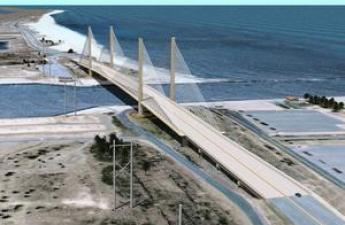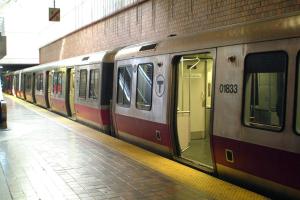Two national engineering companies are in the cross-hairs of the Delaware Department of Transportation.
The Delaware Department of Transportation (DelDOT) has filed suit against Florida-based Figg Bridge Engineers and its subcontractor, Atlanta-based Mactec Engineering, for alleged geotechnical engineering errors involved in a failed effort to build a new bridge over the Indian River Inlet in Sussex County, Delaware. According to a Press Release issued by the State of Delaware, as embankment construction was nearing completion in early 2007, excessive settlement, bulging, tilting and other deformation of the embankment walls were observed. After investigation, DelDOT concluded that the embankments would pose continual and costly maintenance, as well as construction and safety risks and should be replaced with elevated roadway approaches to the new bridge. The Federal Highway Administration, which is providing a large portion of the funding for the replacement bridge, agreed with DelDOT’s conclusion to remove the embankments.

The lawsuit states that the deficiencies in the embankments are directly attributable to the failures and omissions of MACTEC, and that MACTEC, as sub-consultant to Figg, breached the standard of care that it owed to DelDOT. The facts in the complaint “are based upon comprehensive studies prepared by the engineering firm of O’Connell & Lawrence, Inc. and the geotechnical consulting firm of Golder Associates, Inc., as well as observations of experts made during deconstruction of the embankments. ” The lawsuit specifically alleges that:
- MACTEC did not adequately analyze monitoring data and thus did not recognize that the intended embankment stability had dropped below minimally acceptable levels during and upon completion of construction;
- The embankments settled and deformed substantially more than MACTEC had advised DelDOT would be the case. This is because MACTEC miscalculated the nature and extent of settlement in the soft clay under the embankments, and did not take into account other types of settlement.
- MACTEC miscalculated the time intervals over which settlement would occur.
- MACTEC failed to specify a process for monitoring data or implementing necessary action if required by field conditions.
DelDot is seeking over $19.6 million in damages from Figg and Mactec.
In a vigorous detailed response, Mactec has stated, among other things, that:
- In November 2005, despite the fact that the original bridge design was canceled, DelDOT authorized spending millions of dollars to construct embankments for the original bridge. DelDOT knew and understood that the original bridge would never be built and that any other bridge design would require that changes be made to the embankments which would likely include the removal of large sections.
- In October 2007, DelDOT prepared a Proposed Path Forward. When this document was reviewed by the Federal Highway Administration, they labeled it as “full of scare tactics and misdirection to avoid doing the proper engineering.” Rather than performing the engineering requested by the federal government’s primary technical agency for bridge design and construction, DelDOT forged ahead on its predetermined path without involving the design team.
- In January 2008, DelDOT hired outside counsel and two consulting claims firms to assist in the investigation at an estimated cost of $2.1 million. Neither consulting firm was asked to review/recommend methods to address technical issues of concern. Both firms have acknowledged they cannot support the report of the ‘independent’ geotechnical firm upon which the DelDOT Proposed Path Forward was based, that they had not considered the bases of DelDOT’s decision, and that they did not investigate the installation of certain critical aspects of the embankments by the contractor.
- In April 2008, geotechnical monitoring data showed that the embankments had reached the required settlement and the original bridge design plan could have been constructed without removal of the constructed embankments. The predictions on the amount and length of time for settlement by the “independent” geotechnical firm were clearly overstated.
- In May 2008, DelDOT, again, authorized spending millions of dollars to deconstruct the embankments. DelDOT claims the decision to be based on the engineering report from the “independent” geotechnical firm. Factually, however, this expenditure was the direct result of DelDOT’s 2005 decision to proceed with building embankments for a bridge design that was never intended to be built. DelDOT had to accommodate the new bridge design by removing significant amounts of the embankment on both sides regardless of the accuracy of any predictions made by anyone as to settlement.
It will be interesting to see how the case enfolds. Stay tuned!
——————
Photo (c) DelDot
<!–03bbccc94bff4df6b273c115904d7f02–>




